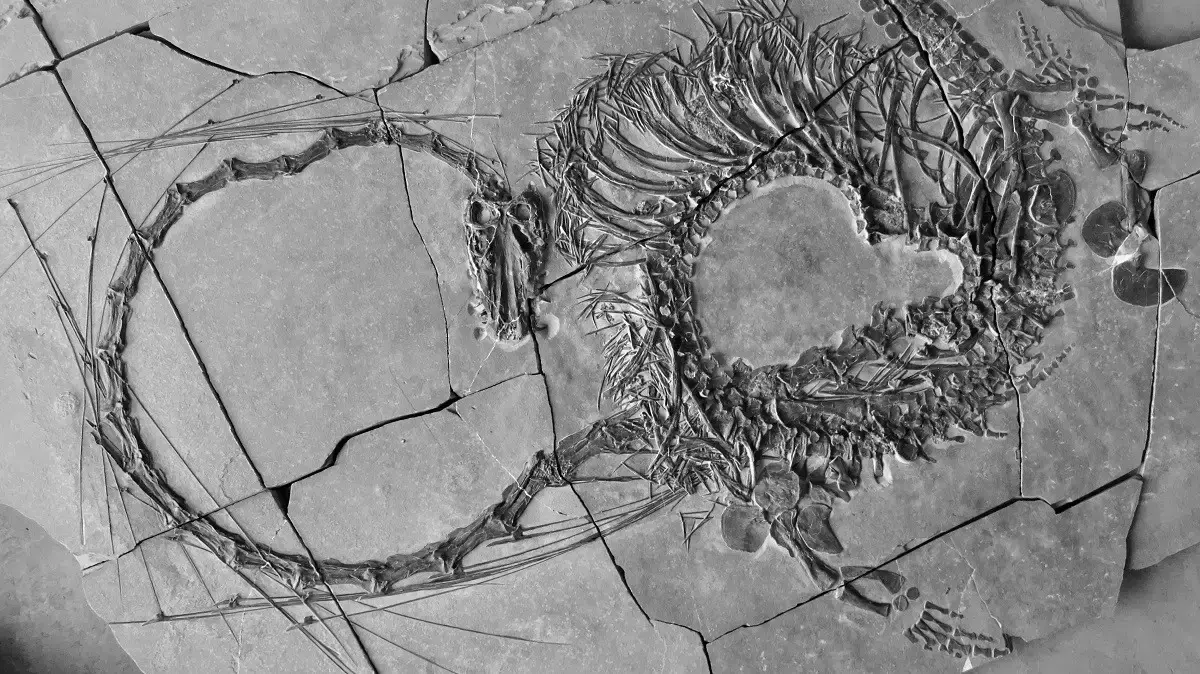Enlarge image
Proud Bird: Model of the Thanatosdrakon Amaru at the Universidad Nacional de Cuyo in Mendoza, Argentina
Photo: Universidad De Cuyo
Argentine paleontologists have discovered a new species of giant, flying reptile.
Dubbed the "Death Dragon," the pterosaur lived 86 million years ago, coinciding with the dinosaurs.
The analysis is based on two specimens, one of which could span its wings seven meters, the other even nine meters.
This makes the newly discovered species Thanatosdrakon amaru the largest found in South America to date, as well as one of the largest in the world, according to the Universidad Nacional de Cuyo in Argentina.
In addition, the Thanatosdrakon is the oldest known member of the Quetzalcoatlinae family of pterosaurs, according to the university.
Pterosaurs preceded birds as the first creatures on Earth to use wings to hunt prey from the air.
Unique features
The research team discovered the fossils of the thanatos dracone near Aguada del Padrillo in the Andes of western Argentina's Mendoza province.
The rocks in which the reptile's remains were found date back 86 million years to the Cretaceous period.
The terrifying creature would have lived at least 20 million years before the catastrophe that heralded the end of the dinosaurs, according to the experts.
About 66 million years ago, a giant asteroid struck off the coast of what is now Mexico's Yucatan Peninsula, wiping out about three quarters of life on the planet at the time.
Project manager Leonardo Ortiz said in an interview that the find has some features that have never been observed before.
Therefore, not only a new species, but also a new genus should be named.
"We currently have no records of close relatives even resembling the physique of these beasts," Ortiz said.
Terrifying sight
The chosen genus name Thanatosdrakon combines the ancient Greek words for death (Thanatos) and dragon (Drakon).
"It seemed appropriate to call him that," says Ortiz.
"He is the death dragon."
The reptile must have been a terrifying sight, as illustrated by a model on display at the University of Mendoza.
The researchers published their work in the journal »Cretaceous Research«, and the Brazilian paleontologist Alexander Kellner, who has already identified a number of dinosaur species, was also involved.
ak/Reuters







